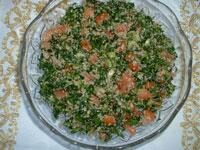Farida Fahmy's Interview: Egyptian Dance Aesthetics
Keti: What is the main characteristic of Egyptian dance?
Farida: Egyptian dance aesthetics are bound by the Egyptian sense of beauty – often found in the arts. Egyptian Dance shares a lot of characteristics with a lot of other traditional Egyptian arts and life in general, dance is a part of Egyptian culture. The dance reflects the Egyptian temperament. The main characteristic is improvisation. Improvisation is the “state of the moment”. Improvisation is what gave the dance longevity; if the Egyptian dance forms were static they would have died out by now. Improvisation in dance is personal and it needs flexibility, not strict rules.
Keti: Has this element of improvisation in Egyptian dance resulted in new dance artforms?
Farida: Yes. Ethnologists seem to want to identify Egyptian dance arts as static, quantifiable forms – like museum pieces. But cultures, people and their arts, including dance, should be able to evolve as they wish. Egyptian dance has evolved greatly in the last century, and it continues to evolve today in modern society.
Keti: How did the Reda troupe work creatively with Egyptian Dance?
Farida: The first group of dances performed by the Troupe were largely inspired by inner-city Cairo (Fatimid Cairo, the heart of Cairo) and the rural societies closest to Cairo. This meant that the characters portrayed in the dances were more urban in nature. At the time the Reda Troupe was evolving, theatre design and costume design were happening concurrently – we created many new innovations in theatre dance, as well as field research throughout Egypt that resulted in dances inspired by indigenous arts. We aimed at designing new artforms to show main movements and to show the grace of those moves, without losing their characteristics. Dancing with the Milayah on stage, and the Muwashahat were theatrical innovations of the Reda Troupe.
Keti: Does Raqs Sharqi, or Egyptian bellydance share characteristics with indigenous Egyptian dance?
Farida: The core movements are similar for all – oscillation of the hips, stepping movements, the shimmy, the sway and often, colloquial gesture. The indigenous moves share basic characteristics of many core bellydance moves, because these original dances were the impetus for the development of urban dance, and many movements have been preserved through time, even though the dance itself has changed. Theatre dance, such as the dance we performed in the Reda troupe, was inspired by indigenous dance then adapted for stage – as stage has a completely different artistic aesthetic, including space and audience relationship. The European orchestra and music, as well as ballet and stagecraft, have also shaped Egyptian Raqs Sharqi.
Source: www.faridafahmy.com


